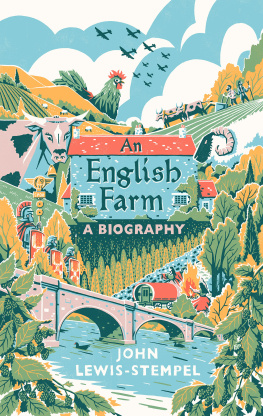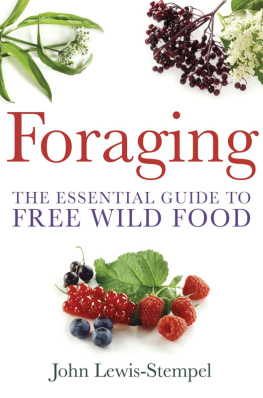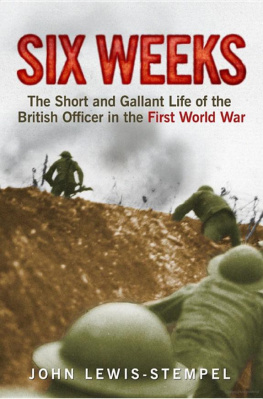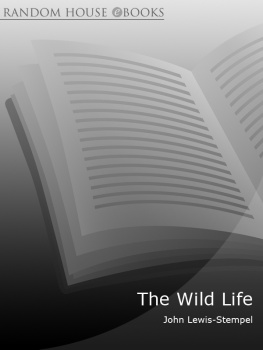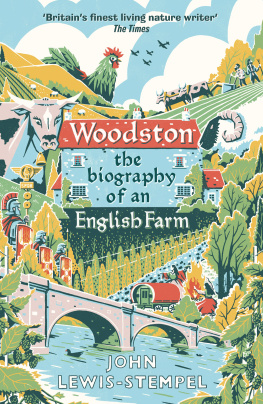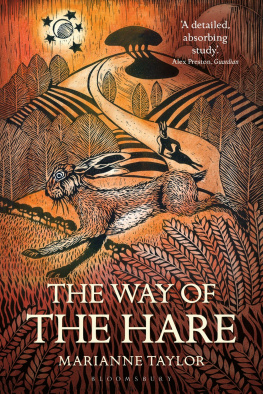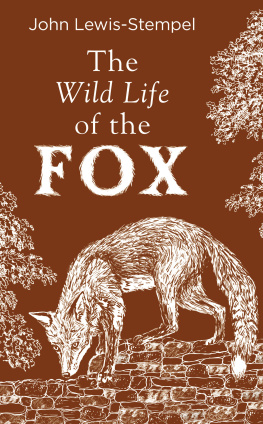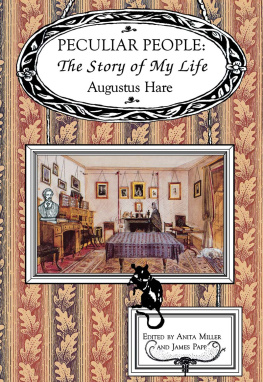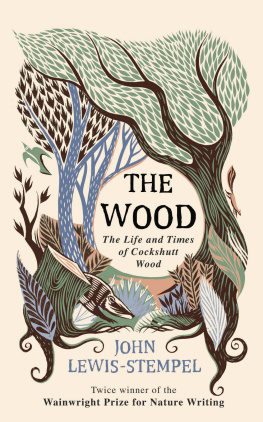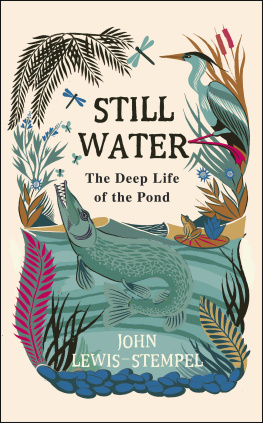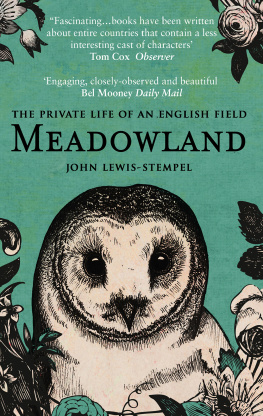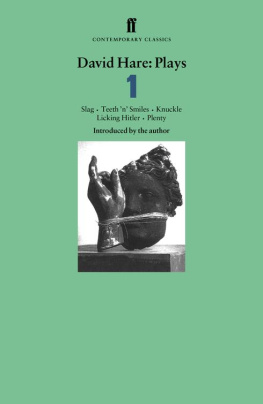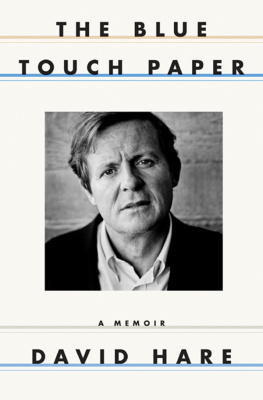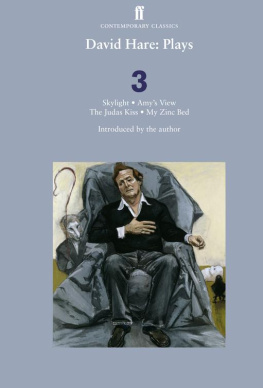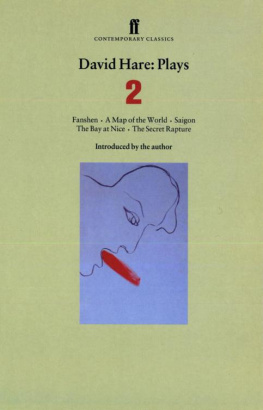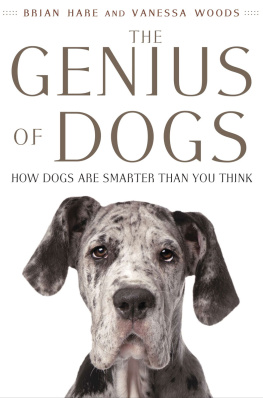Contents
Also by John Lewis-Stempel
England: The Autobiography
The Wild Life: A Year of Living on Wild Food
Six Weeks: The Short and Gallant Life of the British Officer in the First World War
Foraging: The Essential Guide
The War Behind the Wire: The Life, Death and Glory of British POWs, 191418
The Wildlife Garden
Meadowland: The Private Life of an English Field
The Running Hare: The Secret Life of Farmland
Where Poppies Blow: The British Soldier, Nature, the Great War
The Secret Life of the Owl
The Wood: The Life & Times of Cockshutt Wood
About the Book
The Running Hare is natural history close up and intimate.
It is the closely observed study of the plants and animals that live in and under plough land, from the labouring microbes to the patrolling kestrel above the corn; of field mice in nests woven to crop stems, and the hare now running for his life.
It is a history of the field, which is really the story of our landscape and of us, a people for whom the plough has informed every part of life: our language and religion, our holidays and our food.
And it is the story of a field, once moribund and now transformed.
John Lewis-Stempel writes with insight, wit and poetry. This is a rare and joyful book.
About the Author
John Lewis-Stempel is a writer and farmer. His previous books include The Wild Life: A Year of Living on Wild Food, Meadowland: The Private Life of an English Field, which won the 2015 Wainwright Prize, The Running Hare: The Secret Life of Farmland, which was shortlisted for the 2017 Wainwright Prize, and Where Poppies Blow, which won the prize. John writes for Country Life and won the BMSE Columnist of the Year Award in 2016. He lives on the borders of England and Wales with his wife and two children.
The Running Hare
The Secret Life of Farmland
John Lewis-Stempel
TRANSWORLD PUBLISHERS
6163 Uxbridge Road, London W5 5SA
www.penguin.co.uk
Transworld is part of the Penguin Random House group of companies whose addresses can be found at global.penguinrandomhouse.com

First published in Great Britain in 2016 by Doubleday
an imprint of Transworld Publishers
Copyright John Lewis-Stempel 2016
John Lewis-Stempel has asserted his right under the Copyright, Designs and Patents Act 1988 to be identified as the author of this work.
Illustrations by Micaela Alcaino
Lyrics from Combine Harvester (OShaughnessy/Safka) reproduced by kind permission of Sony/ATV Music Publishing, EMI Music Publishing.
Every effort has been made to obtain the necessary permissions with reference to copyright material, both illustrative and quoted. We apologize for any omissions in this respect and will be pleased to make the appropriate acknowledgements in any future edition.
This book is substantially a non-fictional account based on the life, experiences and recollections of the author. In some cases names of people or the detail of events have been changed solely to protect the privacy of others. The author has stated to the publishers that, except in such minor respects not affecting the substantial accuracy of the work, the contents of this book are true.
A CIP catalogue record for this book is available from the British Library.
Version 1.0 Epub ISBN 9781473525832
ISBN 9780857523266
This ebook is copyright material and must not be copied, reproduced, transferred, distributed, leased, licensed or publicly performed or used in any way except as specifically permitted in writing by the publishers, as allowed under the terms and conditions under which it was purchased or as strictly permitted by applicable copyright law. Any unauthorized distribution or use of this text may be a direct infringement of the authors and publishers rights and those responsible may be liable in law accordingly.
1 3 5 7 9 10 8 6 4 2
To the brown hare, the corncrake, the poppy, and the partridge (grey and red-legged).
Preface
NOW THAT I look back, I see that I have written with some anger.
It happened like this. A few years ago a friend suggested that we, in a mutually beneficial arrangement, grazed our sheep in her paddock. We got the sheep fed, she got the grass cut.
She lived in lowland east Herefordshire, a place I knew well from childhood, and in tending the sheep there I was forced to leave the wonderland in which I lived, the Black Mountains of the EnglandWales border. Up on those dark but heavenly hills skylarks sang, otters swam in the brook, and polecats eyed up the chickens.
Where our friend lived was beautiful, but as life-full as a cemetery. Someone had removed the birds from the farmland all around her. For hundreds and hundreds of square miles around her.
The Farmer is to blame. The Supermarket too. And let us not forget the Politician, and the Consumer. Let us not omit Me, or You.
Really: I just want the birds back.
CHAPTER I
I Take This Field
Soil. Earth. Dirt.
Call it what you will, its the element of agriculture, of farmland...
I WAS EARLY . A parent being early is as useless as a parent being late, but it was only when I checked the texted directions on my phone that I realized it said 2, not 12, for post-sleepover pick-up. What to do for two hours while I waited to prove my paternal reliability and save her teenage embarrassment? I was near British Camp on the Malvern Hills, those dinosaur-spine eruptions into the cultivated English Eden, and it was years since Id last been up, so up I went, blue coat flapping like a sheet on the line. Edward Elgar lived close by for a decade, so Nimrod played loud in the air as I ascended to the Iron Age fortress.
Breathless, at the top I sat down for the view, which in another way took my breath away. Laid out, as in the view from an aeroplane window, was Herefordshire, the whole of it, to the Black Mountains in the west, the shining Wye to the south, the Clee Hills to the north.
This is my heartland. Once, my London-born wife asked me to mark on a map everywhere my family, both paternal and maternal lines, have been born. From here I can see every place for the last eight hundred years. She laughed, but kindly, with the appreciation of someone whose own family have wandered.
It was warm in the August sun and I was tired, so I lay down in a hollow and fell to drowsy dreaming:
Dream I
A memory, actually, from some time in the 1970s, I cant be sure when, but before the river of life hit the dividing rock of exams, when some went one way, the rest elsewhere:
I finger-toe climb the gappy stone wall behind my grandparents house in Herefordshire (going through the gate would be no Everest adventure) into the wheat-field. The cereal is gold and heavy-headed, the evening sun blood-red, the scene a Stalinist painting of promised-land plenty. I start pushing through the rows of the crop; since I am small and the wheat tall (wheat was dwarfed soon afterwards so it did not bend under the weight of chemical sprays) I can hold my arms aeroplane-like and skim the hard heads with flat hands to achieve equilibration. There is a slight wind in the wheat; my hands and the breeze make sibilance. Above me, and in fancy, swallows are Spitfires wheeling and diving.

